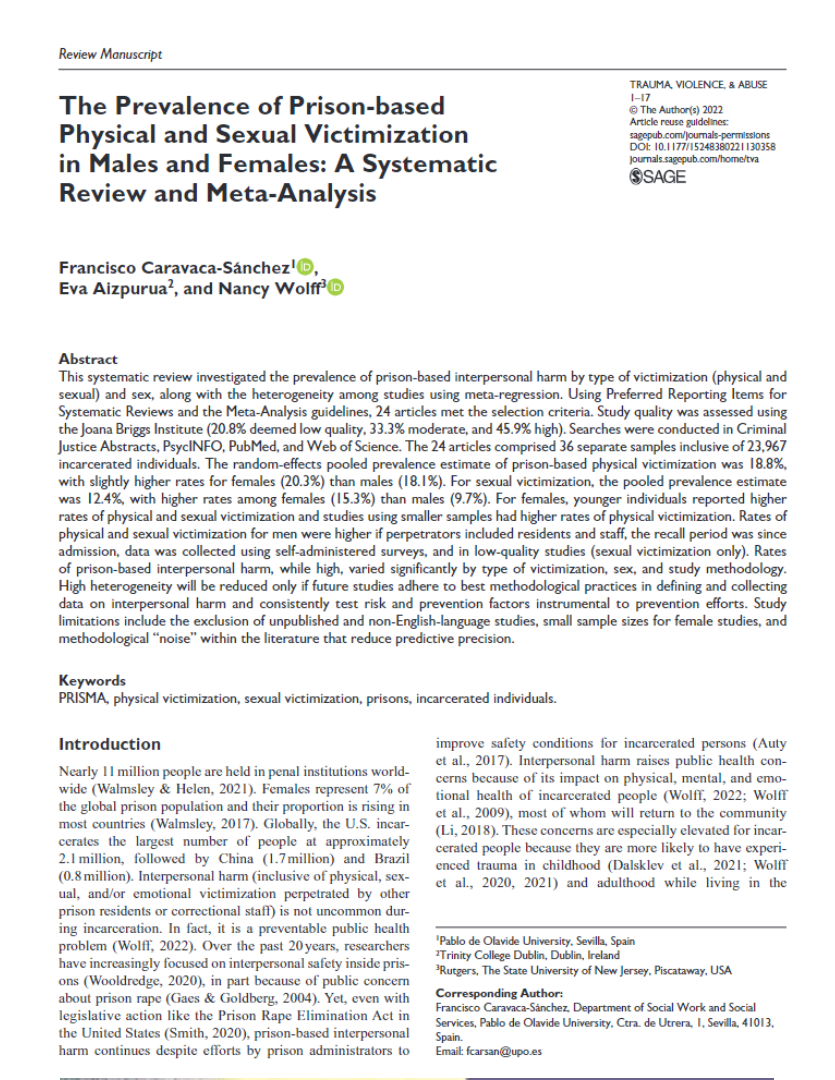This systematic review investigated the prevalence of prison-based interpersonal harm by type of victimization (physical and sexual) and sex, along with the heterogeneity among studies using meta-regression. Using Preferred Reporting Items for Systematic Reviews and the Meta-Analysis guidelines, 24 articles met the selection criteria. Study quality was assessed using the Joana Briggs Institute (20.8% deemed low quality, 33.3% moderate, and 45.9% high). Searches were conducted in Criminal Justice Abstracts, PsycINFO, PubMed, and Web of Science. The 24 articles comprised 36 separate samples inclusive of 23,967 incarcerated individuals. The random-effects pooled prevalence estimate of prison-based physical victimization was 18.8%, with slightly higher rates for females (20.3%) than males (18.1%). For sexual victimization, the pooled prevalence estimate was 12.4%, with higher rates among females (15.3%) than males (9.7%). For females, younger individuals reported higher rates of physical and sexual victimization and studies using smaller samples had higher rates of physical victimization. Rates of physical and sexual victimization for men were higher if perpetrators included residents and staff, the recall period was since admission, data was collected using self-administered surveys, and in low-quality studies (sexual victimization only). Rates of prison-based interpersonal harm, while high, varied significantly by type of victimization, sex, and study methodology. High heterogeneity will be reduced only if future studies adhere to best methodological practices in defining and collecting data on interpersonal harm and consistently test risk and prevention factors instrumental to prevention efforts. Study limitations include the exclusion of unpublished and non-English-language studies, small sample sizes for female studies, and methodological “noise” within the literature that reduce predictive precision.
The prevalence of prison-based physical and sexual victimization in males and females: a systematic review and meta-analysis
Citation:
Caravaca-Sánchez, F., Aizpurua, E., & Wolff, N. (2022). The Prevalence of Prison-based Physical and Sexual Victimization in Males and Females: A Systematic Review and Meta-Analysis. Trauma, Violence, & Abuse, 0(0). https://doi.org/10.1177/15248380221130358
